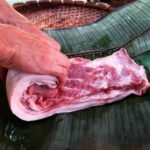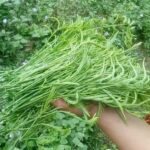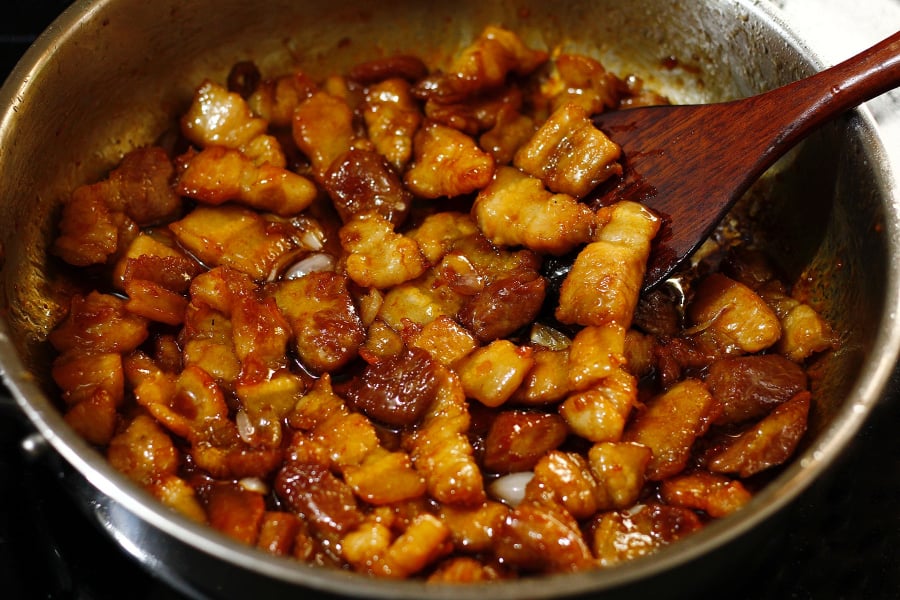
Among countless familiar dishes, caramelized pork belly holds a special place in the hearts of Vietnamese people. Just the aroma wafting from the kitchen is enough to make everyone’s stomach growl with anticipation.
What seems simple can be tricky: many struggle with dry, tough, or overly charred pork, or end up with a watery dish that lacks flavor. So, what’s the secret to achieving perfectly caramelized, tender pork?
Choosing the Right Pork for Caramelization
The key to a delicious dish lies in selecting the right ingredients.
-
Pork belly: The top choice. With its marbled fat and lean meat, it becomes tender and juicy when caramelized, achieving a golden crust without drying out.
-
Pork shoulder: Slightly fatty with some connective tissue, it stays tender when cooked, ideal for those who prefer less fat.
-
Avoid lean cuts: Lean pork loin or leg tends to dry out and toughen when caramelized, failing to achieve the desired tenderness.
Pro tip: Choose cuts with evenly distributed fat and lean meat, avoiding thick fat layers. Slice the pork into moderately thin pieces for even cooking.
Ingredients to Prepare
-
300–400g pork belly or shoulder.
-
1 onion, 3–4 garlic cloves.
-
Seasonings: Premium fish sauce, sugar, pepper, seasoning powder, and a dash of cooking oil.
-
Optional: Green onions, fresh chilies, or ginger for extra flavor.
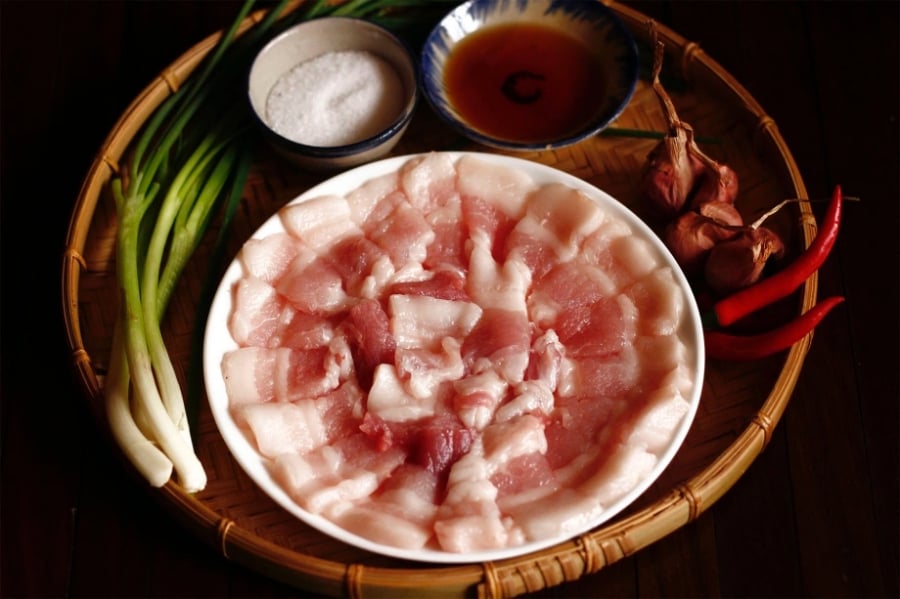
Prepping Pork to Eliminate Odor
-
Rinse the pork with diluted salt water to remove any gamey smell.
-
Blanch the pork in boiling water for 1–2 minutes, then drain. This step removes impurities and odors.
-
Slice the pork into thin, even pieces, about two fingers in length, to prevent excessive shrinkage during cooking.
Steps to Perfectly Caramelized Pork
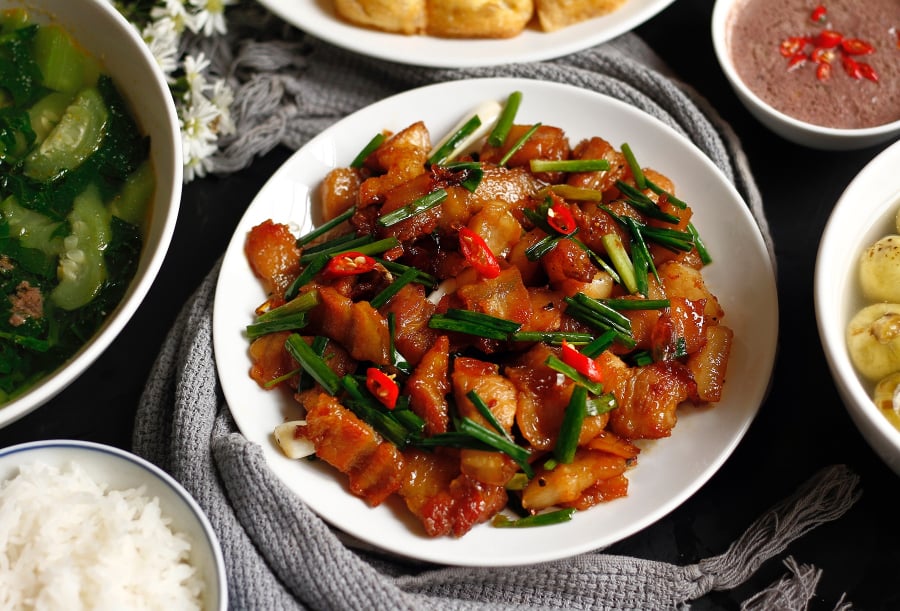
Step 1: Marinating the Pork
-
Place sliced pork in a bowl, add 1 tablespoon fish sauce, 1 teaspoon sugar, a pinch of pepper, and minced garlic and onion.
-
Mix well and let it sit for 15–20 minutes to absorb the flavors.
Step 2: Caramelizing the Pork
-
Heat a pan, add a dash of oil.
-
Once the oil is hot, add the pork and stir-fry over high heat, tossing quickly to sear the edges and render the fat until golden brown.
-
When the pork is browned, reduce the heat to medium.
Step 3: Enhancing the Flavor
-
Add 1–2 tablespoons fish sauce and 1 teaspoon sugar (or molasses/caramel sauce for color).
-
Stir well to coat the pork evenly, releasing a fragrant aroma.
-
Continue cooking until the sauce reduces, leaving the pork caramelized yet tender inside.
Step 4: Finishing the Dish
-
Turn off the heat, sprinkle with chopped green onions and freshly ground pepper.
-
Serve immediately while hot.
Tips for Perfect Caramelized Pork
-
Avoid adding too much water: The dish should be dry, not saucy like braised pork.
-
Use high heat initially: This helps the pork sear and retain moisture.
-
Quality fish sauce is key: Use premium fish sauce for a rich, aromatic flavor.
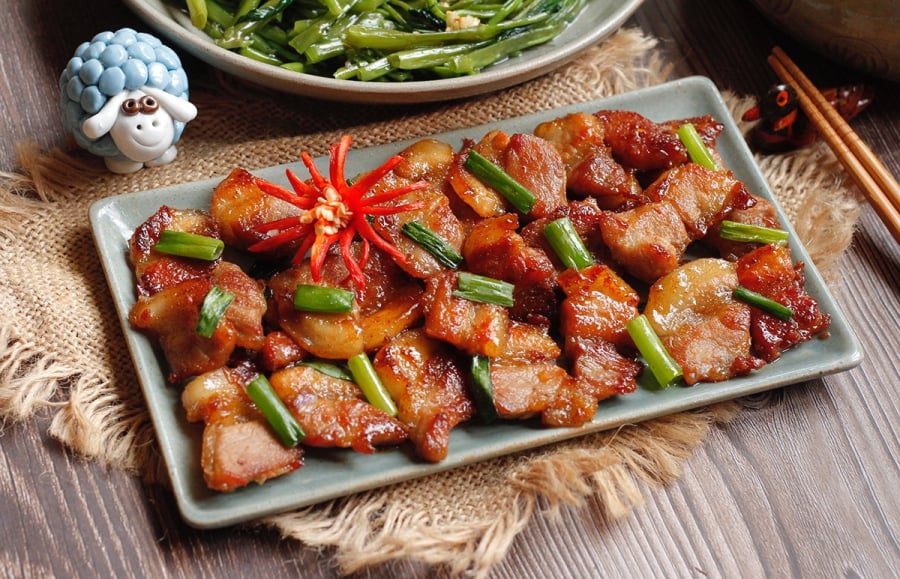
Creative Twists on Caramelized Pork
-
Ginger Caramelized Pork: Add ginger strips for a warming dish, perfect for chilly days.
-
Green Onion and Chili Caramelized Pork: Spicy and aromatic, a rice companion.
-
Pickled Vegetable Caramelized Pork: Sauté pickled veggies with pork for a tangy twist, cutting through richness.
Nutritional Value of Caramelized Pork
-
Rich in protein, promoting overall health.
-
Contains B vitamins and minerals from pork.
-
Moderate fat content, when eaten in balance, provides energy without causing weight gain.
The Secret to a Never-Ending Rice Bowl
A perfect plate of caramelized pork belly boasts a golden crust, fragrant fish sauce aroma, and tender, juicy meat inside. With a few simple tips for selecting, marinating, and cooking, you’ll create a dish that keeps everyone reaching for more rice.
Caramelized pork belly is more than a humble dish—it’s a cherished childhood memory in Vietnamese family meals. Mastered correctly, it’s guaranteed to leave a lasting impression on anyone who tries it.
“Unique Thai Binh Specialty: Whole Pork Leg Dish—Order Weeks in Advance for This Rare Delicacy”
Discover a unique twist on traditional Vietnamese sausages with *giò nây*, a delicacy that stands apart from classics like *giò xào*, *giò bò*, *chả mỡ*, or *chả quế*. While these favorites are crafted from finely minced meat, *giò nây* takes a bold departure by using whole cuts of pork, meticulously rolled to perfection. Experience the rich, authentic flavors of this distinctive creation, where tradition meets innovation in every bite.
Wild Berries Once a Childhood Snack in Vietnam Now Fetch Up to $30/kg as a Sought-After “Superfruit” Abroad
In South America, the birthplace of *Physalis peruviana* (Cape Gooseberry), this fruit is cultivated with meticulous care, using organic standards and selective breeding. Plump, vibrant orange, and bursting with a sweet, delicate flavor reminiscent of strawberries, apples, and grapes, it has become a prized export, delighting palates across Europe, Japan, and the United States.

























